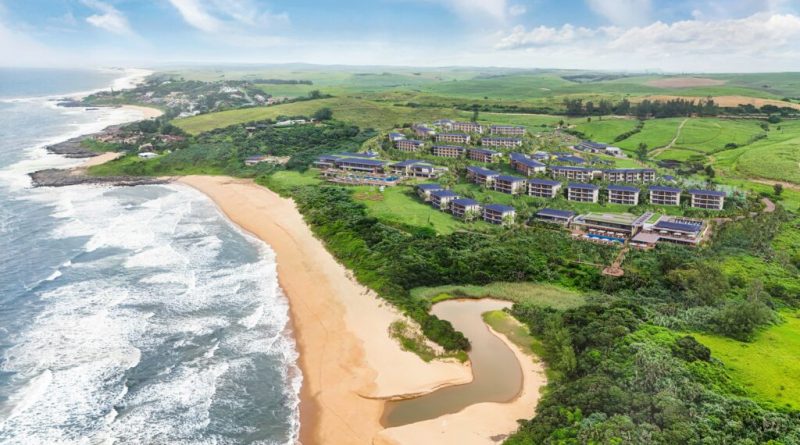Club Med: Impact of South Africa’s Most Exclusive Resort on Destination Tourism
Close to five decades after Sun City set the benchmark for leisure spots in South Africa, focus is now shifting to the North Coast of KwaZulu-Natal.
The recent unveiling of a new Club Med resort, being brought to life by the Collins Residential Consortium, has sparked considerable excitement, largely due to its scale and implications.
Listen/read: Club Med SA beach resort will ‘change the North Coast forever’
With an expected construction budget nearing R2 billion, it promises to be the most costly tourism project in the nation’s history. This milestone signifies a broader trend of renewed investment in tourism infrastructure, highlighting the potential of such initiatives to stimulate economic activity within local supply chains. Furthermore, it reflects the sophistication of South Africa’s financial sector in navigating complicated transactions within a realm often deemed high-risk.
Comprehending the importance of this opportunity demands an understanding of what destination-scale tourism encompasses.
This term pertains to projects or locales that are substantial and cohesive enough to draw visitors independently, rather than just competing for existing traffic. They act as anchors for travel—places where accommodations, leisure, and additional services converge into a sustainable ecosystem.
In South Africa, this level of tourism has historically revolved around distinct entities: purpose-built destinations like Sun City; those that leverage natural assets such as Kruger National Park, the Drakensberg, and Table Mountain; and entire cities, with Cape Town being a prime example.
Listen to Vumiso Nyamazana, regional head for KZN of Commercial Property Finance at Absa CIB, in an interview with Suren Naidoo on the Property Pod:
You can also listen to this podcast on iono.fm here.
ADVERTISEMENT
CONTINUE READING BELOW
Each of these locations has evolved into a focal point for investments in hotels, recreational facilities, retail outlets, and transportation networks, clustered around their charm.
However, this concentration brings challenges: resources, skills, and supporting infrastructure have intensified mainly in these well-established regions, leaving other areas underdeveloped. For South Africa to broaden its tourism economy, new projects of this scale must emerge—initiatives capable of redistributing demand and creating alternative entry points for both local and international travelers.
When such projects come to fruition, the effects on local economies can be significant.
In the case of Club Med, initial projections suggest over 800 direct jobs and 1,500 indirect jobs, along with 1,200 construction workers during the development phase.
Beyond the numerical advantages, the significance of the long-term connections forged around the project is crucial. Large resorts attract suppliers for food, cleaning, and transportation services, elevate the demand for training institutions, and invigorate a variety of micro-industries—from laundry services to entertainment.
Once operational, visitor spending circulates through local farms, factories, and service providers far beyond the resort itself. Infrastructure benefits as well: roads are upgraded, utilities are enhanced, and digital connectivity improved, aiding local communities as much as visitors.
Listen/read:
Overtourism ‘not a concern for Cape Town’
Ilembe Chamber head on the North Coast property surge
Club Med R2bn beach resort for KZN North Coast [Sept 2023]
Longstanding Club Med CEO Henri Giscard d’Estaing ‘pushed out’
It is through these connections that destination-scale tourism transitions from a mere leisure investment into an essential development asset. The project becomes part of the regional economy, establishing patterns of demand and employment that extend beyond the initial construction boom, fostering long-term growth.
The challenge, therefore, is developing a more effective pipeline for investments of such scale.
Destination-scale projects are often greenfield endeavors—conceived on undeveloped land with no existing operations or cash flows to support them. This inherent risk means investors cannot depend on established revenue streams or collateral; financing must be constructed around potential rather than current performance.
The financial structure typically comprises two tiers. Equity forms the foundation, accepting the highest risk as it bears the brunt if revenues fall short of expectations. Above it lies debt, available from commercial banks or bond markets, which is only deemed viable if lenders are assured of repayment security.
ADVERTISEMENT:
CONTINUE READING BELOW
In this instance, equity was raised by the Collins Residential Consortium along with partners such as African Bank and the Industrial Development Corporation of South Africa. With this groundwork laid, debt structuring could proceed, with Absa as the lead arranger providing just over half of it.
Read/listen:
‘Club Med beach resort will transform SA tourism’ – Absa CEO [Oct 2024]
‘Designate tourism special economic zones’ to elevate investment – TBCSA [May 2023]
New major players in North Coast property boom [Nov 2018]
The goal isn’t to complicate processes but to create a replicable financial model.
For this model to attract significant capital, it must be underpinned by an environment that lessens obstacles and nurtures confidence. Investors evaluate more than just cash flow; they assess the reliability of critical infrastructure, the consistency of regulatory frameworks, and the credibility of sustainability initiatives.
Roads, energy, and water supplies must support the scale of the proposed development; permits and approvals should be achievable within reasonable timeframes; and environmental and community commitments need to be consistently upheld.
The aspiration is that Club Med serves as a trailblazer.
When a globally acknowledged operator of this magnitude successfully penetrates a new market, it can reshape perceptions of risk and demonstrate that destination-scale tourism is achievable in South Africa. While a single project may not overhaul the entire sector, it can act as a catalyst—setting the stage, creating favorable conditions, and building infrastructure that encourages other significant players to take action.
If this unfolds, the repercussions won’t be limited to a single resort; it will equip South Africa to diversify its tourism economy with a new generation of destination-scale anchors.
* Vumiso Nyamazana is the regional head for KZN of Commercial Property Finance at Absa CIB, and Annah Watkinson is the head of Global Finance for Coastal Regions at Absa CIB.
Follow Moneyweb’s extensive finance and business news on WhatsApp here.



